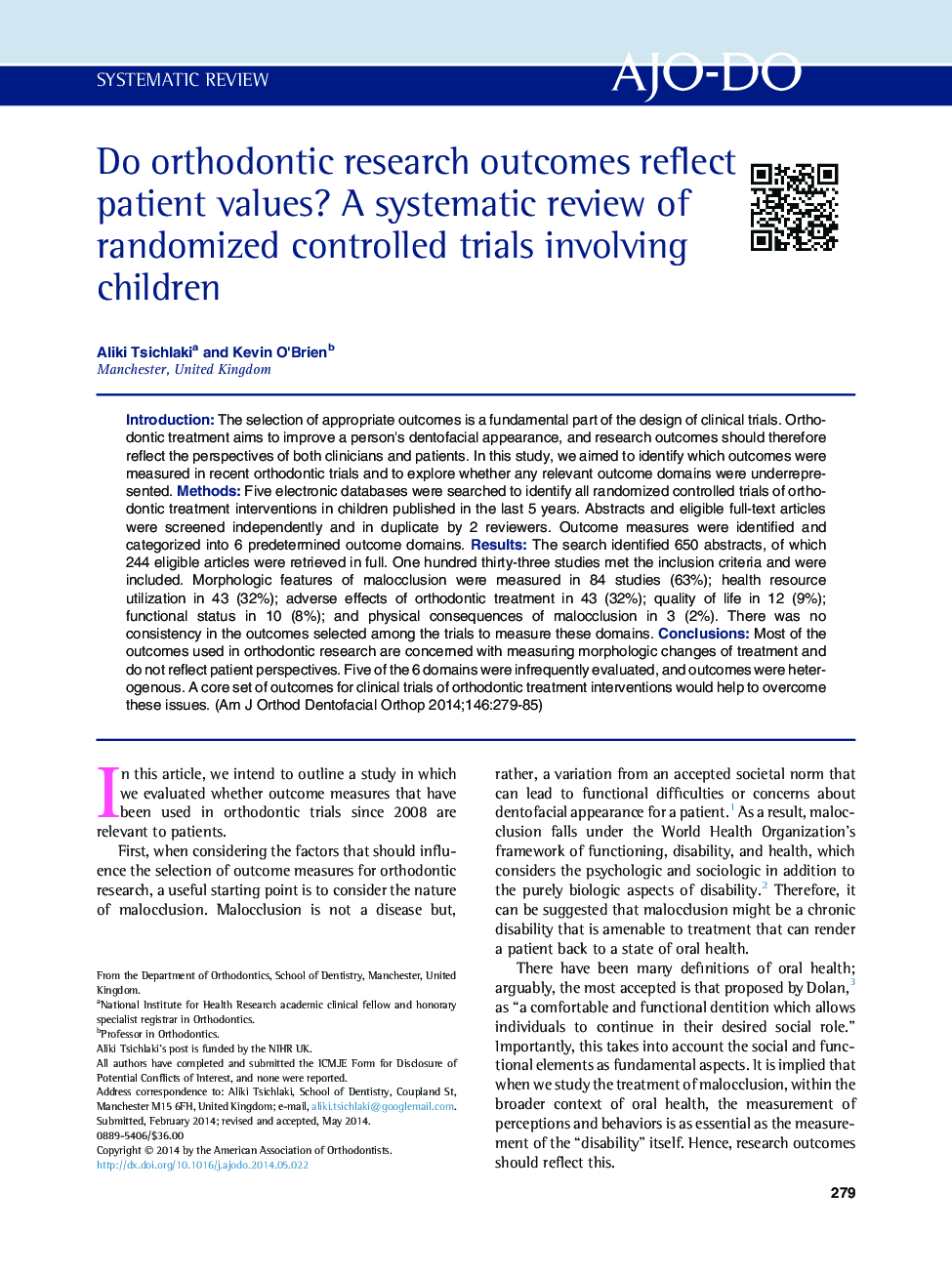| Article ID | Journal | Published Year | Pages | File Type |
|---|---|---|---|---|
| 3116466 | American Journal of Orthodontics and Dentofacial Orthopedics | 2014 | 7 Pages |
IntroductionThe selection of appropriate outcomes is a fundamental part of the design of clinical trials. Orthodontic treatment aims to improve a person's dentofacial appearance, and research outcomes should therefore reflect the perspectives of both clinicians and patients. In this study, we aimed to identify which outcomes were measured in recent orthodontic trials and to explore whether any relevant outcome domains were underrepresented.MethodsFive electronic databases were searched to identify all randomized controlled trials of orthodontic treatment interventions in children published in the last 5 years. Abstracts and eligible full-text articles were screened independently and in duplicate by 2 reviewers. Outcome measures were identified and categorized into 6 predetermined outcome domains.ResultsThe search identified 650 abstracts, of which 244 eligible articles were retrieved in full. One hundred thirty-three studies met the inclusion criteria and were included. Morphologic features of malocclusion were measured in 84 studies (63%); health resource utilization in 43 (32%); adverse effects of orthodontic treatment in 43 (32%); quality of life in 12 (9%); functional status in 10 (8%); and physical consequences of malocclusion in 3 (2%). There was no consistency in the outcomes selected among the trials to measure these domains.ConclusionsMost of the outcomes used in orthodontic research are concerned with measuring morphologic changes of treatment and do not reflect patient perspectives. Five of the 6 domains were infrequently evaluated, and outcomes were heterogenous. A core set of outcomes for clinical trials of orthodontic treatment interventions would help to overcome these issues.
